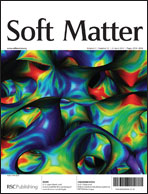The dielectric properties of chitosan in an aqueous solution with no added salts have been measured as a function of concentration and temperature in the frequency range from 40 Hz to 110 MHz, respectively. After reducing the contribution of the electrode polarization effects, the dielectric spectra of chitosan semidilute solutions show two relaxations at 100 kHz and MHz, respectively. The observed two dielectric relaxations have been strictly analyzed using the Cole-Cole function and the possible relaxation mechanisms were attributed to the fluctuation of condensed counterions and free counterions, respectively. The dependence of the dielectric increment and relaxation time on concentration was interpreted in light of the scaling properties of polyelectrolyte solutions. It was found that the dependence of relaxation time on the Cp follows the expected exponents of the scaling laws, both in the low-frequency and high-frequency cases. The good agreement between experimental results and theoretical analysis suggests that the low- and high-frequency relaxation mechanisms are the fluctuation of condensed counterions and free counterions, respectively. In addition to this, this analysis gives further support to the scaling approach of the dynamic behavior of polyelectrolytes. The temperature dependence of the dielectric spectrum of chitosan solutions showed that the low- and high-frequency dielectric increment generally decreases with the rise of temperature, which is considered to be due to the acceleration of the reorientation motion of the counterions. Moreover, the thermodynamic parameters, such as activation free energy Ea, activation enthalpy change ΔH and activation entropy change ΔS of low- and high-frequency were calculated from the relaxation time, and discussed from the microscopic thermodynamical view.

You have access to this article
 Please wait while we load your content...
Something went wrong. Try again?
Please wait while we load your content...
Something went wrong. Try again?


 Please wait while we load your content...
Please wait while we load your content...